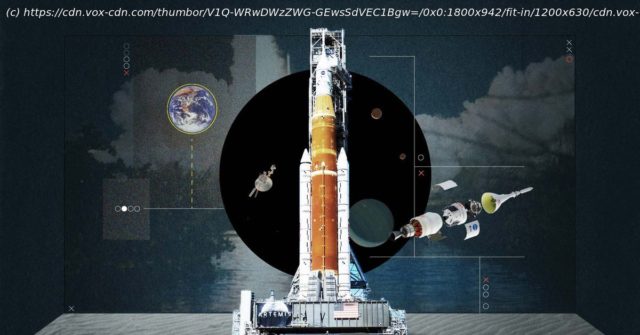NASA delayed the Artemis 1 launch on Monday. The next launch window is Friday, September 2.
NASA delayed the Artemis 1 launch on Monday. The next launch window is Friday, September 2.
A new NASA rocket is about to take off on a historic mission to the moon. The Artemis I mission won’t land on the lunar surface, but the trip itself will be the farthest a vehicle designed for human astronauts has ever traveled into space.
There won’t be any humans on NASA’s big trip, but there will be three astronauts: Helga, Zohar, and Moonikin Campos. They’re high-tech manikins — that’s the term for human models used in scientific research — filled with sensors that will test how the human body responds to space travel. Helga and Zohar are designed to measure the effects of radiation on women’s bodies in space, and Moonikin Campos will sit in the commander’s seat to track just how bumpy a voyage to the moon might be for future human crew members. While these manikins might not look particularly impressive on their own, they will play a critical role in NASA’s ambitions to build a new pathway to the moon and, eventually, send astronauts to Mars. They’re also just one of several science experiments aboard the mission meant to better our understanding of space travel.
Liftoff was originally scheduled for Monday morning, but NASA postponed the launch after engineers encountered several issues, including a nearby thunderstorm and problems with chilling one of the rocket’s engines. The next launch window for the flight is Friday, September 2, though it’s possible that the mission won’t launch until sometime in October. As soon as NASA does figure out fixes, the Space Launch System (SLS), the most powerful rocket NASA has ever built, will lift off, carrying the Orion spacecraft on its nose. Once the vehicle leaves orbit, Orion will travel past the moon, and then thousands of miles beyond it, before turning around and heading back to Earth — a 1.3 million-mile journey that will last 42 days. You can watch the launch here, starting later in the week.
“This is a good demonstration that the rocket works the way it’s supposed to,” Wendy Whitman Cobb, a professor at the US Air Force’s School of Advanced Air and Space Studies, told Recode. “It will give NASA a little bit more confidence for crewed missions coming up in the next couple of years.”
Artemis is the next generation of moon missions. It’s part of NASA’s broader ambitions for lunar exploration, which include astronaut treks across the moon’s surface, a lunar human habitat, and a new space station called Gateway. Artemis I also sets the groundwork for the next two missions in the Artemis program: Artemis 2 is scheduled to send humans on a similar trip around the moon in 2024, and Artemis 3 will make history by landing the first woman and the first person of color on the lunar surface sometime in 2025, at the earliest. All of the research happening on Artemis I — including Helga, Zohar, and Moonikin Campos — is meant to prepare for those later missions. All aboard Artemis 1
NASA’s ride to the moon, the SLS, was designed to carry an extremely heavy payload. The rocket is just a few meters taller than the Statue of Liberty, and it can generate 8.8 million pounds of thrust. Like other launch systems, the SLS is made up of several different stages, each of which plays a role in overcoming Earth’s gravity, breaking through the atmosphere, and reaching outer space. To make that happen, the SLS includes twin solid rocket boosters, as well as a 212-foot tall core stage filled with more than 700,000 gallons of liquid oxygen and liquid hydrogen. It’s the largest core stage NASA has ever made.
After takeoff, the boosters will fire for about 2 minutes before separating from the vehicle, falling back toward the ground, and landing in the Atlantic Ocean.






